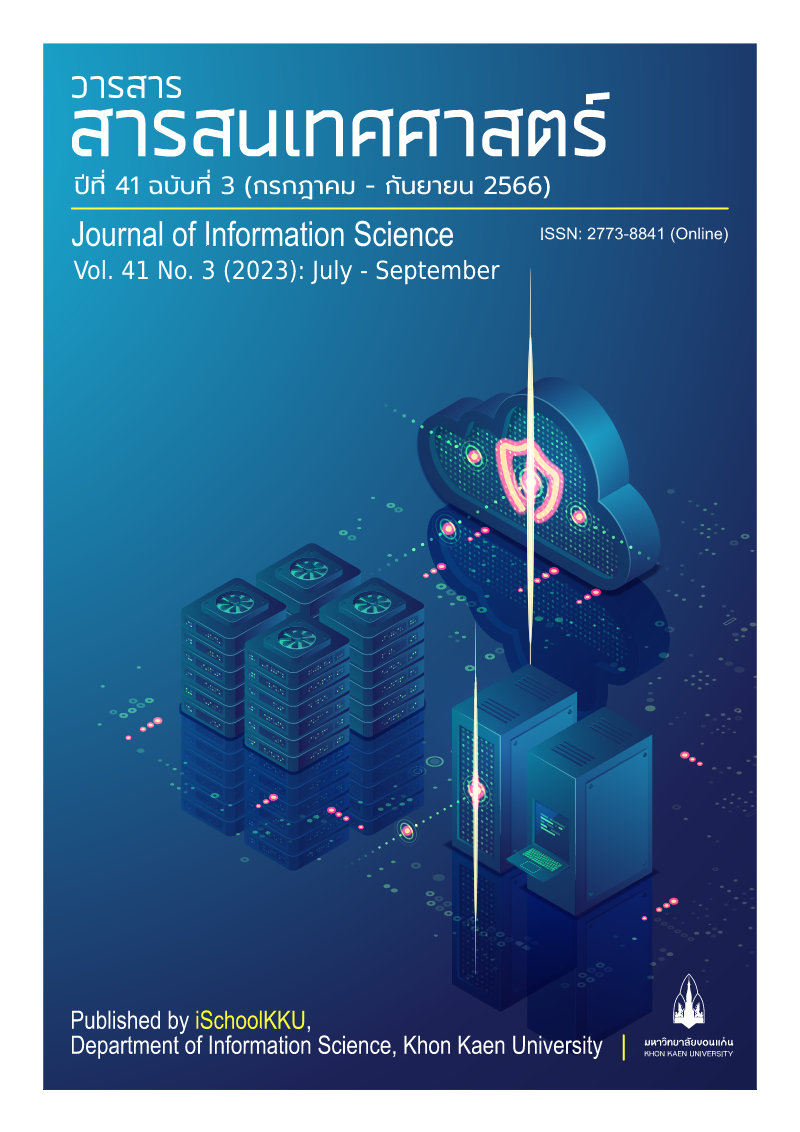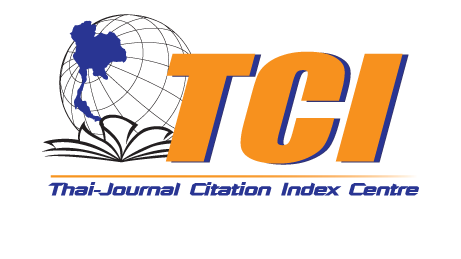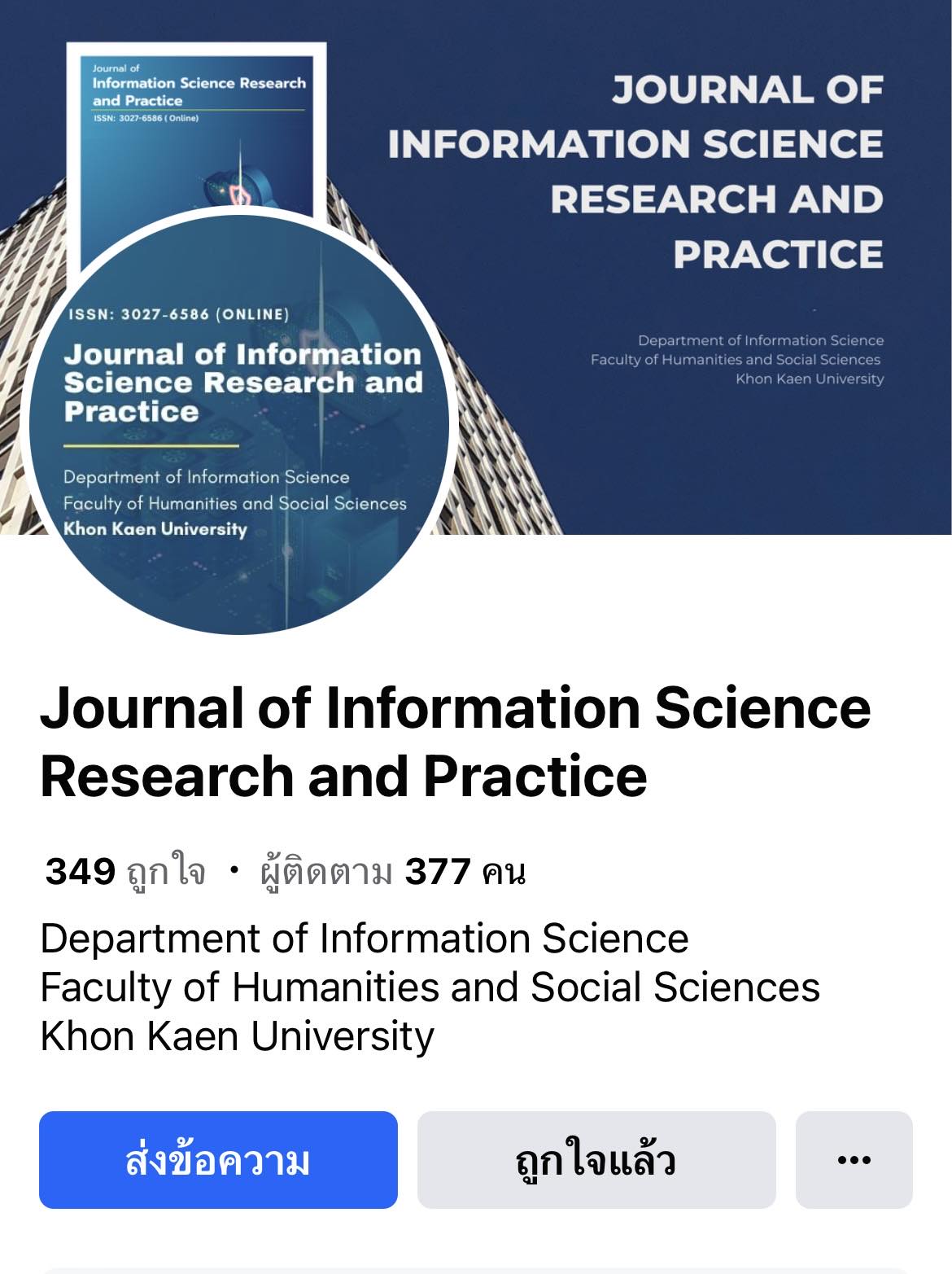Data Analysis for Prediction of Workforce Requirements of the Job Market in the Digital Age
DOI:
https://doi.org/10.14456/jiskku.2023.22Keywords:
Data Analytics, Prediction, Manpower, Workforce, Job MarketAbstract
This review article proposes the results of a literature synthesis on data analysis to predict the workforce requirements of the job market in the digital age and the trends in the future demand for manpower and the essential skills of the workforce in an age of digital disruption. The synthesized information was accessed from four Thai and global online databases, namely ThaiJo, Science Direct, Emerald Insight, and Springer Link, and used two search engines for online academic literature, namely Semantic Scholar and Google Scholar. To begin a database search, keywords related to the research were defined to provide academic literature and research papers containing relevant topics of academic review and published between 2011 and 2021. The received literature includes research articles and academic articles. There were 10 titles total, divided into 2 Thai articles and 8 English articles. Conducting content synthesis and summarizing the body of knowledge related to data analysis for predicting workforce requirements of the digital age job market. The results of the review revealed that there were 15 data analysis algorithms for predicting techniques, including EDFR, Documentary Analysis, Box-Jenkins, Winters Additive Exponential Smoothing, Combined Forecasting, Naïve Bayes, Decision Tree, Decision Rules, C4.5, Grey Model, Regression Model, Support Vector Machines, k-Nearest Neighbor, Regression Analysis, and the AODE Algorithm. These techniques are used to analyze data in the programs SPSS, Weka, Matlab, SAS, R, and Visual Basic. Data analysis will compare the effectiveness of each technique to determine the most precise outcome to generate predictive modelling, which is most likely used to estimate supply and demand, as well as calculate the workforce required for the organization or a project in progress. In addition, the future demand of the workforce indicates that automation tends to replace human employment in 2020–2025, such as the use of artificial intelligence in the manufacturing industry. However, there is still a need for workers with new skills in areas such as skills to operate, maintain, and manage technology. It’s therefore critical that the workforce is required to continuously activate new skills to meet the expectations of the workforce market that are subject to change in the form of employment in the digital age.
Downloads
References
Alsultanny, Y.A. (2013). Labor Market Forecasting by Using Data Mining. Procedia Computer Science, 18, 1700-1709.
Akinnuli, B.O., & Apolowo, R.K. (2018). Regression Analysis Based Effective Manpower Planning Methodology: A Case Study. Journal of Engineering Research and Reports, 1(4), 1-12.
Alghamlas, M., & Alabduljabbar, R. (2019). Predicting the Suitability of IT Students' Skills for the Recruitment in Saudi Labor Market. International Conference on Computer Applications & Information Security. (1-5). Saudi Arabia: Riyadh.
Amphanthong, P., & Busababodhin, P. (2014). Forecasting PM10 in the Upper Northern Area of Thailand with Grey System Theory. (In Thai). Burapha Science Journal, 20(1), 15-24.
Arayaphan, W., & Nantasri, C. (2018). Job Market and Social needs for Ph.D. Graduate in Information Studies. (In Thai). Veridian E-Journal Silpakorn University (Humanities, Social Sciences and arts), 11(2), 1073-1089.
Chk, P. (2021). Manpower Group on Thailand Labor Market Trends in 2021. (In Thai). Retrieved form https://brandinside.asia/manpower-group-on-thailand-labour-market-trends-in-2021
Dawson, N., Rizoiu, M.A., Johnston, B., & Williams, M.A. (2020). Predicting Skill Shortages in Labor Markets: A Machine Learning Approach. IEEE International Conference on Big Data (Big Data), (1-14). Atlanta: GA.
Hrnote. (2021). Working Skills for Globalization Era. (In Thai). Retrieved form https://th.hrnote.asia/tips/190809-skills-for-globalization
Katchwattana, P. (2021). 10 Skills World Economic Forum 2025. (In Thai). Retrieved form https://www.salika.co/2021/01/23/10-skills-world-economic-forum-2025
Kamchonkitticoon, W. (2018). Electric Usage Classification using Naïve Bayes and Neural Network. (In Thai) Master thesis in Engineering, Department of Computer and Telecommunication Engineering, Dhurakij Pundit University.
Keerativibool, W. (2016). Forecasting Model for the Number of Employed Person in Thailand. (In Thai). Journal of Science and Technology Ubon Ratchathani University, 18(2), 52-62.
Kingkaew, C. (2014). Review of Predictive Analytics for Big Data in Business. (In Thai). Panyapiwat Journal, 5, 254-217.
Kulvanitchaiyanunt, A. (2020). Big Data Series II: Think Like a Data Scientist. (In Thai) Nonthaburi: Sukhothai Thammathirat University.
Ladybee. (2021). Branding Editor’s Picks Highlight. (In Thai). Retrieved form https://www.thumbsup.in.th/reasons-to-change-your-content-production
Nachev, A., & Teodosiev, T. (2018). Analysis of Employment Data using Support Vector Machince. International Journal of Applied Engineering Research, 13(18), 13525-13535.
Nesdc. (2011). New growth. (In Thai). Competitiveness Newsletter, 3(3), 1-10.
OECD. (2019). Rapid Action Needed for People to Meet Challenges of Changing World of Work. Retrieved form https://www.oecd.org/employment/rapid-action-needed-for-people-to-meet-challenges-of-changing-world-of-work.htm
Pacharawongsakda, A. (2020). A Little Book of Dig Data and Machine Learning. (In Thai). Nonthaburi: IDC Premier.
Pasilatasang, B. (2021). AI by Python Machine Learning. (In Thai). Bangkok: Se-Education.
Piriew, P., Tanupol, N., & Sungrugsa, N. (2017). The scenario of Workforce Development for Support Digital Television of Thailand Industrial in the next 5 Years. (In Thai). Veridian E-Journal Silpakorn University, 10(2),1355-1377.
Pooknilchai, K. (2014). Workforce Demand Forecasting Model Appropriation with Task: A Case Study of CP ALL Co., Ltd. (Public). (In Thai). Panyapiwat Journal, 5(2), 103-119.
Saraubon, K. (2020). Data Science and AI: Machine Learning by Python. (In Thai). Bangkok: Media Network.
Shet, S.V., Poddar, T., Samuel, W., & Kwivedi, Y.K. (2021). Examining the Determinants of Successful Adoption of Data Analytics in Human Resource Management - A Framework for Implications. Journal of Business Research, 131, 311-326.
Siririn, J. (2018). Ethnographic Delphi Futures Research. (In Thai). Retrieved form https://www.salika.co/2018/10/15/ethnographic-delphi-futures-research
Thanomboon, R. (2015). Research for Future. (In Thai). EAU Heritage Journal Science and Technology, 9(1), 74-78.
Thitipattakul, N. (2021). 7 Job of 2022-Job of The Future. (In Thai). Retrieved 10 October 2021, form https://www.disruptignite.com/blog/7-jobs-of-2022
Vaid, K., & Ghose, U. (2020). Predictive Analysis of Manpower Requirements in Scrum Projects Using Regression Techniques. International Conference on Smart Sustainable Intelligent Computing and Applications. (335-344). India: Maharaja Agrasen Institute of Technology.
Wang, C.N., & Nguyen, N.T. (2013). Forecasting the Manpower Requirement in Vietnamese Tertiary Institutions. Asian Journal of Empirical Research, 3(5), 563-575.
Wijayapala, M.P., Premaratne, L., & Jayamanne, L.T. (2016). Employability and Related Context Prediction Framework for University Graduands: A Machine Learning Approach. International Journal on Advances in ICT for Emerging Regions, 2, 1-12.
World Economic Forum. (2021). Top 10 Jobs of the Future - for 2030 and Beyond. Retrieved form https://www.weforum.org/agenda/2021/05/jobs-of-the-future-year-2030
World Economic Forum. (2020a). The Future of Jobs Report 2020. Geneva Switzerland: World Economic Forum.
World Economic Forum. (2020b). These are the Top 10 Job Skills of Tomorrow - and How Long it takes to Learn Them. Retrieved form https://www.weforum.org/agenda/2020/10/top-10-work-skills-of-tomorrow-how-long-it-takes-to-learn-them
Yongsiriwit, K., & Chaisiriprasert, P. (2017). Big Data Analytics for Forecasting Patient Volumes in Thailand using R Programming Language. (In Thai). The 5th Academic Science and Technology Conference. (1-7). Bangkok: ASTC.








